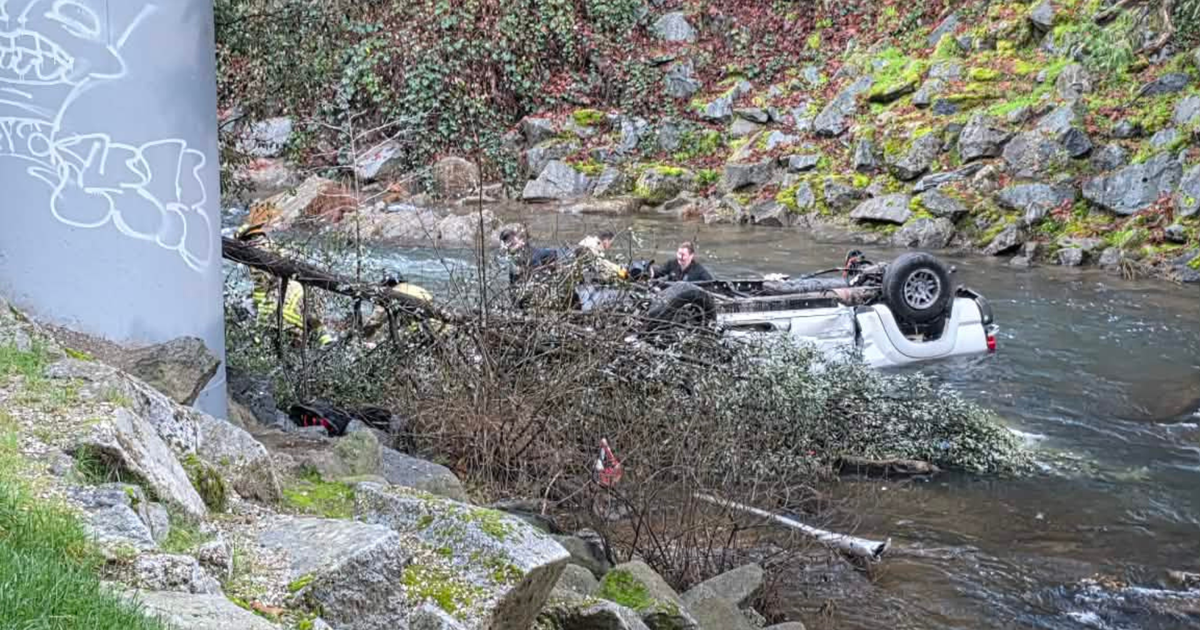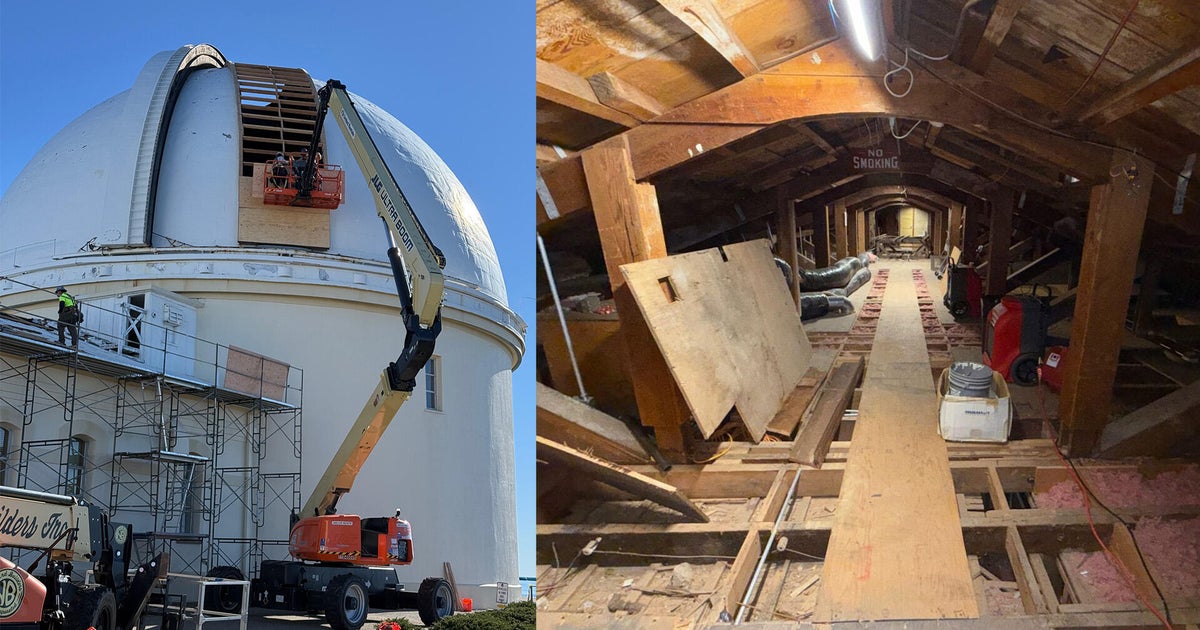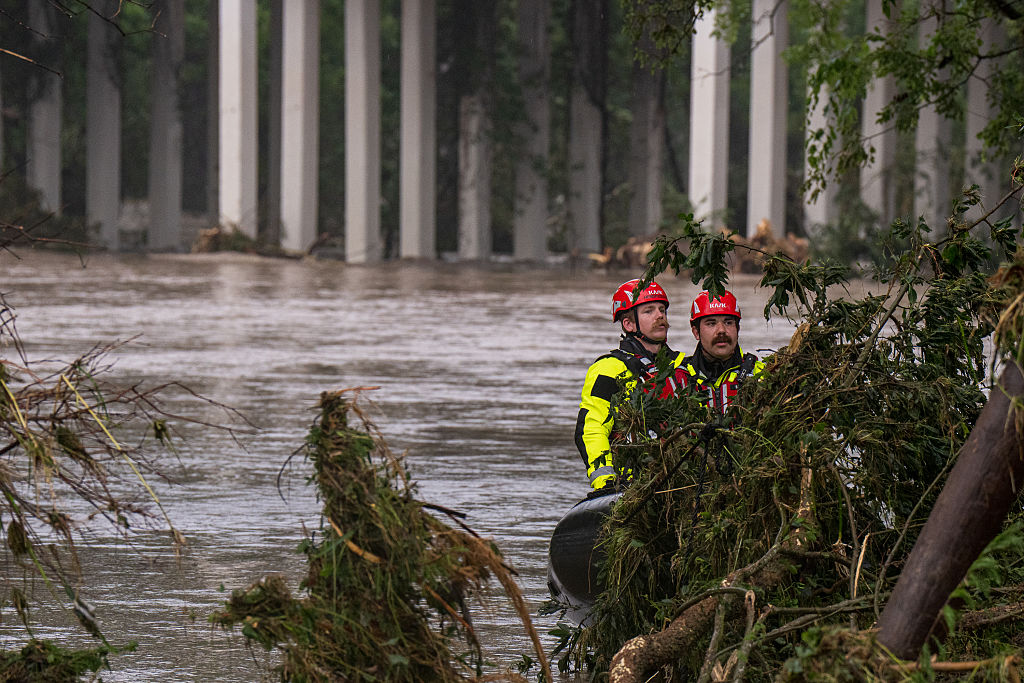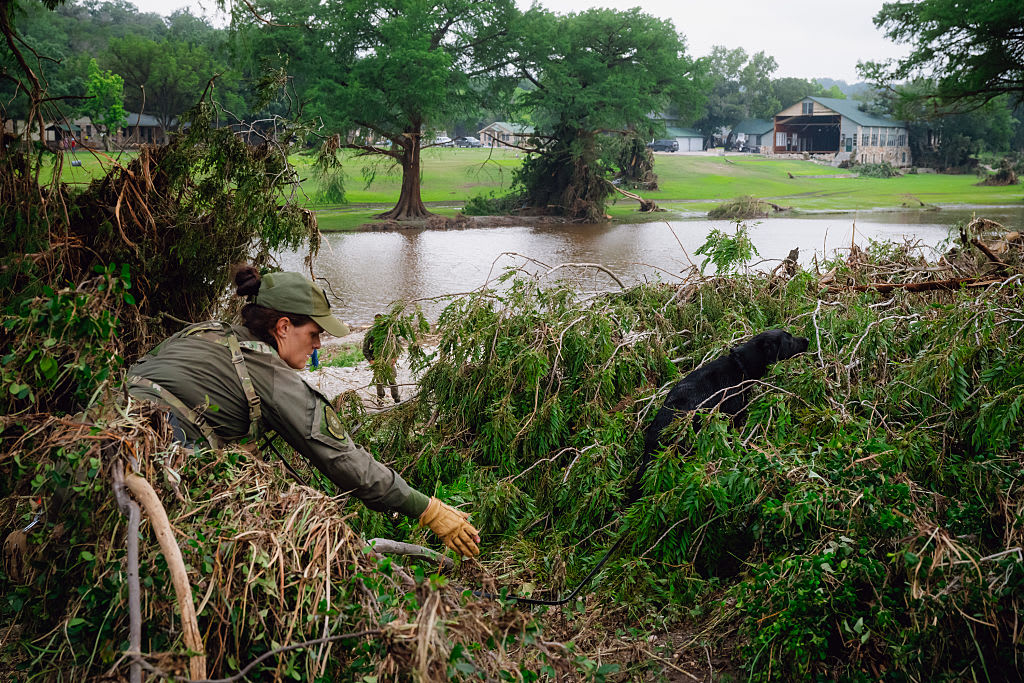What is an "atmospheric river"?
A massive storm stretching from California to Nevada has flooded California vineyards, led to massive mudslides, overflowed rivers, and left thousands without power since last week.
The back-to-back storms stem from an “atmospheric river” that has pulled precipitation from the Pacific Ocean, as far west as Hawaii. Here’s what you need to know about the phenomenon behind this week’s extreme flooding.
Atmospheric rivers are weather systems that move high concentrations of water vapor outside of the tropics. They can be big or small, but the biggest atmospheric rivers bring strong winds, water vapor, and lightning when they make landfall, often causing extreme rainfall and floods, according to the National Oceanic and Atmospheric Administration, or NOAA.
Under these conditions, atmospheric rivers can be life-threatening. For context, a strong atmospheric river transports 7.5 to 15 times as much water vapor as the average flow of water at the mouth of the Mississippi River, according to NOAA. On average, atmospheric rivers are approximately 250 to 370 kilometers wide.
The term “atmospheric river” hasn’t been around forever. It was coined in a 1998 scientific paper by MIT researchers, according to NOAA. The researchers used the term to convey the fact that most water vapor is transported in relatively narrow regions of the atmosphere — specifically, 90 percent of water vapor comes through four to five narrow atmospheric regions.
Here’s how atmospheric rivers look via satelitte:
Not all atmospheric rivers are dangerous. Most of them are weak, providing regions with the rain and snow that’s crucial to a stable water supply. Atmospheric rivers are present somewhere on earth at all times.
The current atmospheric river hits California at a particularly vulnerable time, after six years of serious drought. In Northern California, the Russian River is prone to flooding. But the latest floods threatened to topple trees weakened by six years of inadequate water supply, the Associated Press reported Monday.
Forecasters said more rain and snow is expected, the AP reported. The current flooding could be the worst in more than a decade on the West Coast.






